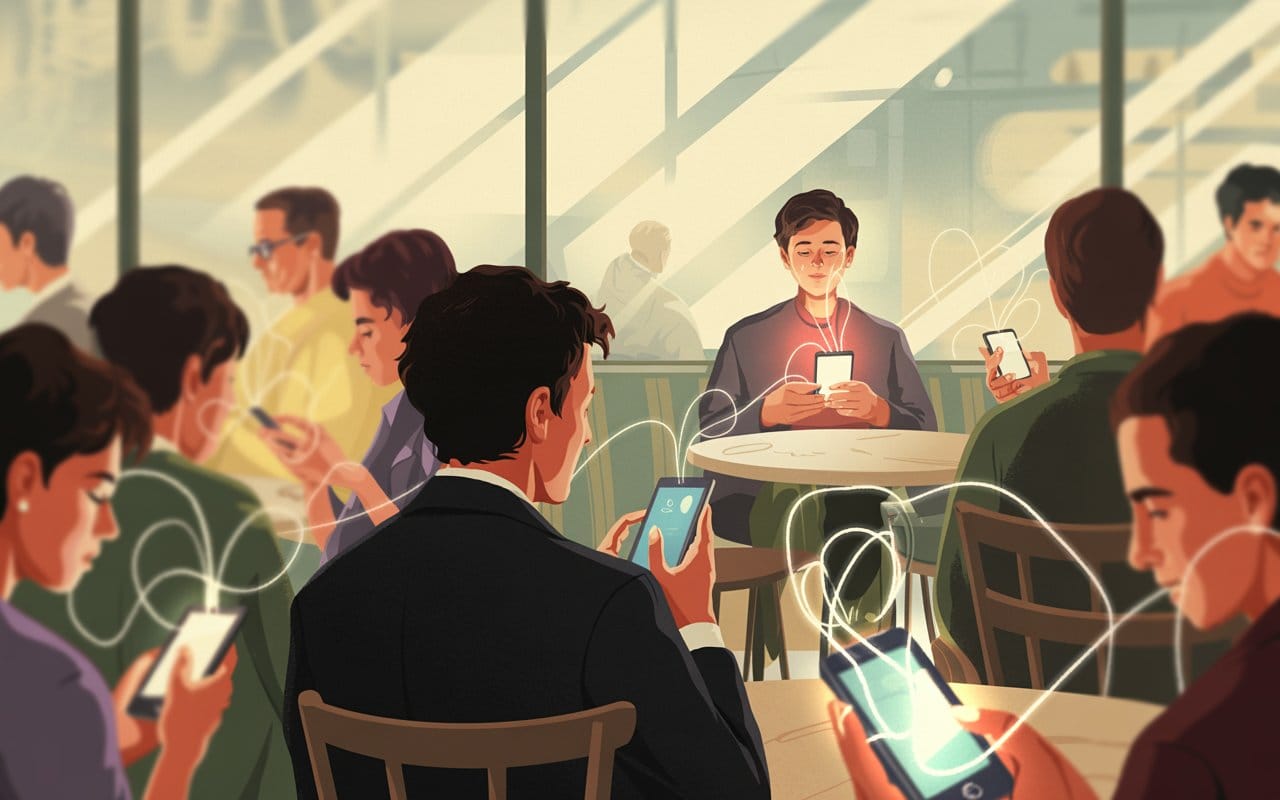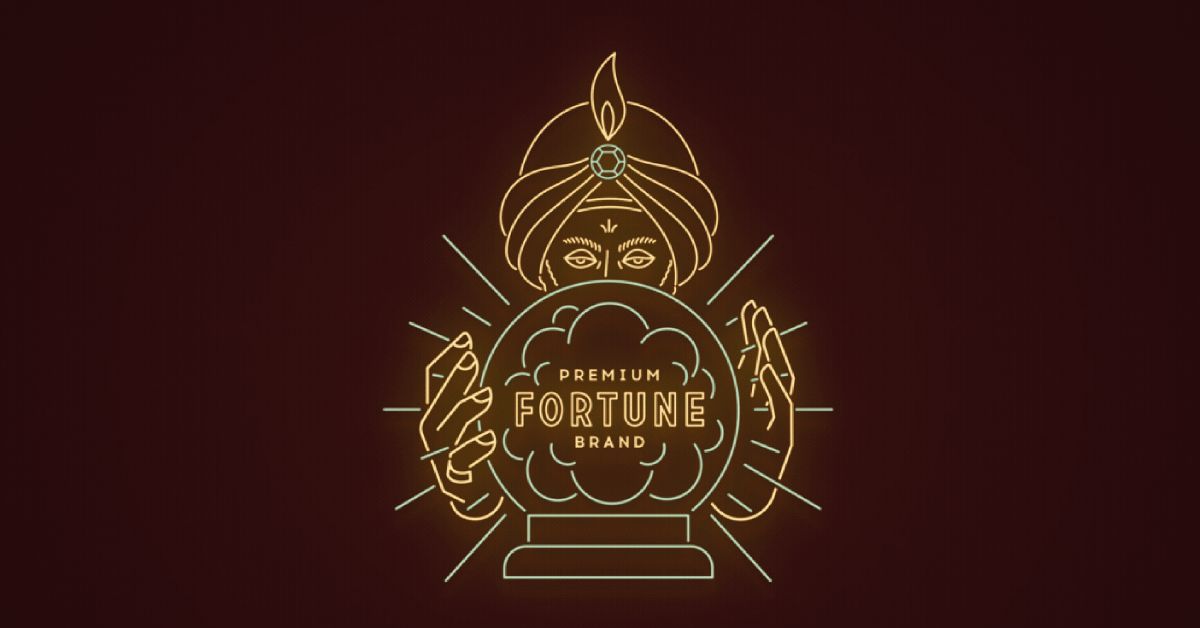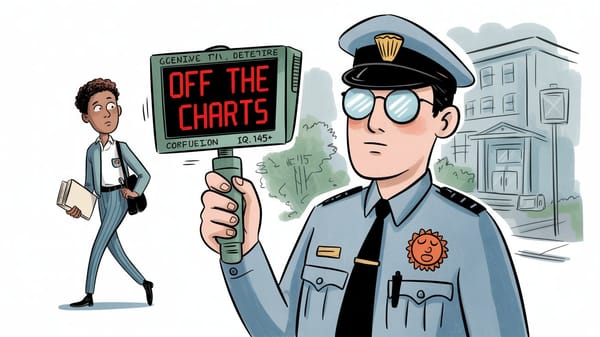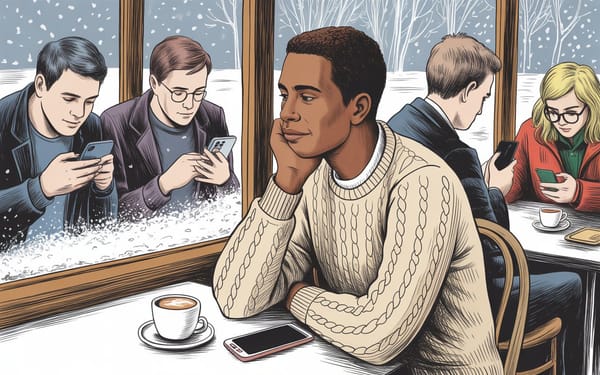

According to Buckminster Fuller...
"You never change things by fighting the existing reality. To change something, build a new model that makes the existing model obsolete."

This week's piece started with a nagging feeling I couldn't quite pin down. You know when something feels off but you can't articulate it? That's where I was with digital platforms—they seem more powerful than ever, yet somehow less satisfying.
The breakthrough came when I realized we might be dealing with something that looks like chemistry: supersaturation.

Why Everything Digital is About to Crystallize
Currently stable. Results not guaranteed.
Here's a chemistry refresher: supersaturation happens when you dissolve more stuff in a solution than it should theoretically hold. Everything looks fine—crystal clear, totally stable. Until you drop in one tiny seed crystal. Then boom. The whole thing reorganizes instantly.
I think that's where we are with digital platforms. And I mean that quite literally.
Look at the signs:
- Engagement optimization has hit diminishing returns: We're drowning in content but somehow more bored than ever. Platforms have basically strip-mined human attention, and now users feel simultaneously overwhelmed and empty.
- Creator economy metrics have decoupled from creator welfare: You can go viral and still be broke. I know creators with millions of views who can barely cover rent while platforms pocket most of the value their work creates.

- Platform consolidation has eliminated meaningful competition: "Innovation" now means buying out competitors before they become threats. When's the last time you saw genuine competition that wasn't just acquired?
- AI systems approach training data exhaustion: AI is starting to eat its own tail—training on synthetic content that was generated by other AI. The outputs look sophisticated but feel increasingly disconnected from actual human experience.
None of this is accidental. These platforms have absorbed more complexity than their basic architecture can handle. They look stable from the outside, but underneath? The whole thing is primed for reorganization.
Why Current Analysis Fails
Here's where most analysts get it wrong: they're still using growth-phase playbooks for a system that's moved into something completely different. It's like trying to understand a forest fire with metrics designed for seedling growth.
When systems hit supersaturation, the rules change completely. Small things can trigger massive shifts. Think about how a single TikTok creator can accidentally influence the algorithm for millions of users, or how an unknown app can suddenly pull users away from billion-dollar platforms. These aren't anomalies—they're features of supersaturated systems.
All those metrics we've relied on—user acquisition costs, lifetime value, engagement rates—were built for systems with room to grow. They can tell you what's dissolved in the solution, but they can't tell you if the whole thing is about to crystallize.
This is why conventional metrics have become basically useless for predicting platform behavior.
Understanding cybernetic principles becomes essential: This is where cybernetics becomes crucial. Instead of just measuring growth, we need to understand feedback loops, system boundaries, and how to actually steer complex systems. It's the difference between reading a speedometer and understanding how to drive.

The Crystallization Patterns
Here's what's interesting: when these systems finally crystallize, they don't just break down. They reorganize around completely different principles.
I'm seeing some clear patterns emerge from the contradictions built into current platforms:
From Engagement to Attention-Positive: The biggest weakness in current platforms? They're built on attention extraction—grabbing and holding focus whether it benefits users or not. What's emerging instead are systems that actually enhance cognitive capacity. Instead of trapping attention, they amplify it and direct it toward things that matter in the real world.
From Extraction to Abundance: Right now, platforms extract value from users and give little back. The alternative that's emerging? Systems designed to actually increase what users can do, what they have access to, how much agency they have. Instead of mining value, they create it.
From Algorithmic to Collaborative: Most AI right now is built to replace human thinking. What I'm seeing develop instead are systems that amplify human capabilities—AI as cognitive infrastructure rather than cognitive replacement. It's the difference between a calculator and a prosthetic brain.
From Global to Local-First: Maybe the most significant shift: instead of pulling people out of their physical communities and into digital spaces, the emerging tech strengthens local connections. It helps people engage more effectively with their actual neighbors, local economy, immediate environment.
I'm not speculating here—these patterns are already emerging. The tools and platforms built on these principles are gaining ground not through better marketing, but because they solve the contradictions that make current systems feel so unsatisfying.
The Navigation Problem
After spending years inside tech development, one thing has become clear: our problem isn't capability anymore. It's navigation. We can build incredibly fast, sophisticated systems, but we're terrible at steering them toward beneficial outcomes.
This is what I think of as the navigation problem: we can build systems of incredible complexity and speed, but we can't reliably point them in directions that actually benefit people.
Think about it: every platform optimizes for engagement without asking whether that engagement is good for users. Every AI system optimizes for performance metrics without checking whether those metrics connect to outcomes people actually want.

The emergence of cybernetic literacy: Going forward, I think cybernetic literacy will become as basic as reading and writing. People will need to understand feedback loops, system boundaries, and directional influence—not as technical specializations, but as fundamental skills for maintaining agency in complex technological environments.
This doesn't mean everyone needs to code. It means developing the mental models necessary to stay in the driver's seat as these systems become more sophisticated.
Making the Transition Navigable
The shift I'm describing isn't just platforms breaking down—it's new systems emerging that are actually designed for human agency. The people who navigate this well won't be optimizing current platforms. They'll be building whatever comes next.
From growth to direction: This takes a mental shift from growth questions ("How do we scale?") to navigation questions ("Where are we actually trying to go?", "What outcomes do we want?", "How do we maintain control over the direction?").
I suspect the next wave of tech won't be defined by what machines can do, but by what humans can direct machines to accomplish while staying genuinely in control of the process.
Practical preparation strategies: If you're trying to prepare for this transition, the most valuable thing isn't learning to code—it's getting clear on direction. What do you actually want technology to do in your life? What would systems designed for your flourishing (rather than your engagement) look like?
Pattern recognition as cognitive defense: Once you can see these supersaturation patterns clearly, the contradictions become almost comical. Billion-dollar companies built on appropriated user data getting praised for "innovation." Engagement systems that systematically reduce people's capacity for engagement with real life. AI trained on human creativity for the explicit purpose of replacing human creativity.
Recognizing this isn't about being dismissive—it's about creating space for alternatives. When you can see the pattern clearly, you stop being trapped by the system's logic and start being able to participate in whatever emerges next.
Why I Stay Optimistic
Despite everything I've outlined here, I'm actually optimistic about this transition. Maybe that seems odd given the turbulence ahead, but complex systems have this interesting property: they're anti-fragile. When extraction-based systems hit their limits, they automatically create openings for better alternatives.
Anti-fragility and emergence: The crystallization process isn't just breaking down what we have—it's making space for what we actually need: tech systems designed for human flourishing instead of behavioral manipulation. When current systems hit their natural limits, they create exactly the conditions better alternatives need to emerge.
What makes me particularly optimistic is how fast supersaturated systems can flip. Unlike gradual market shifts, crystallization happens quickly once it starts. The platforms and tools built on post-supersaturation principles won't need decades to catch on—they'll spread as fast as current systems become unbearable to use.
Right now, somewhere in this supersaturated digital environment, the seed crystals are already forming. People who understand that current systems have hit their limits are building the platforms, tools, and structures that will define whatever comes next.
The navigation challenges will get more intense. The systemic shifts will speed up. But for the first time in decades, we have frameworks for participating consciously in this transition instead of just being swept along by it.
The seed crystal is coming. The question is whether you'll help determine what crystallizes.

Don't miss the weekly roundup of articles and videos from the week in the form of these Pearls of Wisdom. Click to listen in and learn about tomorrow, today.

Sign up now to read the post and get access to the full library of posts for subscribers only.

Khayyam’s is at the intersection of systems thinking and digital transformation, studying how platforms evolve and crystallize into new forms. After years embedded in technology development, he has focused on developing frameworks that help people maintain agency amid increasingly complex digital environments. Khayyam’s work explores how we might navigate the coming transitions not as passive users, but as active participants in shaping whatever emerges next.










Member discussion